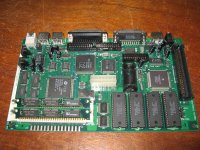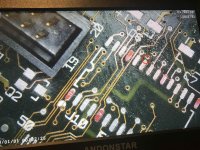I am going over a classic II board and my one has this blue bodge wire. Looking at some photos at the web I see quite a few boards with similar bodge.
Do anyone know what is the purpose of that? Is it a factory fix or DIY upgrades?
Looking at bomarc's schematics I see the connection.
Can anyone help clarify? Also, do anyone know if pin 23 of U10 is connected also to that through hole eight near it?


Do anyone know what is the purpose of that? Is it a factory fix or DIY upgrades?
Looking at bomarc's schematics I see the connection.
Can anyone help clarify? Also, do anyone know if pin 23 of U10 is connected also to that through hole eight near it?


Last edited by a moderator:
